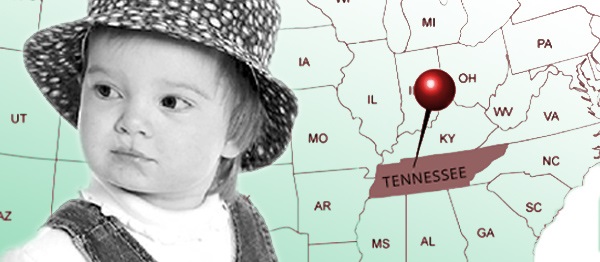
We assisted the community of Dickson, Tennessee in identifying a cluster of cleft palate cases associated with a solvent (TCE) leaking into their water supply from an old landfill. The Center for Disease Control later confirmed this cluster.
When Judith called the offices of Birth Defect Research for Children (BDRC), she was concerned that there were too many children with cleft palate being born in her community of Dickson, Tennessee. Her grandchild had been born with a cleft palate. Judith ran a daycare center and she was seeing a lot of other children with the same birth defect. We listened to Judith’s concerns and sent questionnaires from the National Birth Defect Registry into the community. In a short time, we helped the community document 18 cases of cleft palate out of 1,800 total births over a three-year period. Less than two cases would have been expected according to national statistics.
We also worked with Judith and other community members to investigate environmental factors in Dickson that might be causing this increase in birth defects. We discovered that over 20-30 years, barrels of the solvent, TCE, had been buried in an unlined, uncapped landfill. Over time, the barrels had rusted, and the solvents had leaked out into the landfill and into nearby water sources. Periodically the solvent had been found at highly elevated rates in several sources for community water and in private wells. TCE has been associated with increases in cleft palate in some epidemiological studies.
As a result of our work with community members in Dickson, the landfill has now been capped. One of the main sources of community water has been changed to a river not close to the landfill and residents have been warned not to drink well water. The Center for Disease Control also came to Dickson and conducted a study that confirmed the cleft palate cluster.
“Since May 2000, BDRC has been diligently working on finding the cause of so many birth defects here in Dickson. There have been 18 Children born with cleft lip and palate over the last three years as well as a rise in the number of children identified with autism and other neurological disorders. BDRC has helped document this cluster of birth defects through their National Birth Defect Registry. They have also been persistent in researching toxins released by industries in the county.” Deanna Stephens, Foundations Early Intervention Services.
How Safe Is Your Water?
According to the Environmental Protection Agency, the estimated number of Hazardous Waste Sites expected to be identified between 2004-2033 is an incredible 294,000. Just like in Dickson, people living at polluted sites nationwide could be exposed to the toxic contaminant trichloroethylene, or TCE, at levels higher than the EPA identified as a health concern in 2001. And TCE is just one of a number of toxins that can migrate into the water supply. What can you do to insure that your water supply is healthy for you and your unborn child?
- Report any problems with your water’s taste, smell or color to your water department immediately.
- Monitor news reports about contaminants in your area.
- Test well water frequently.
- Drink bottled or filtered water if there are any concerns about contamination.
- Consider a whole-house water filtration system since you can also be exposed to contaminants through showering and bathing.
- Read your water department’s annual report and take your questions about water quality to your elected officials.
Start a community investigation
Do you believe there are too many birth defects or developmental disabilities in your community? We can help you investigate. Please fill the form below to get started.


